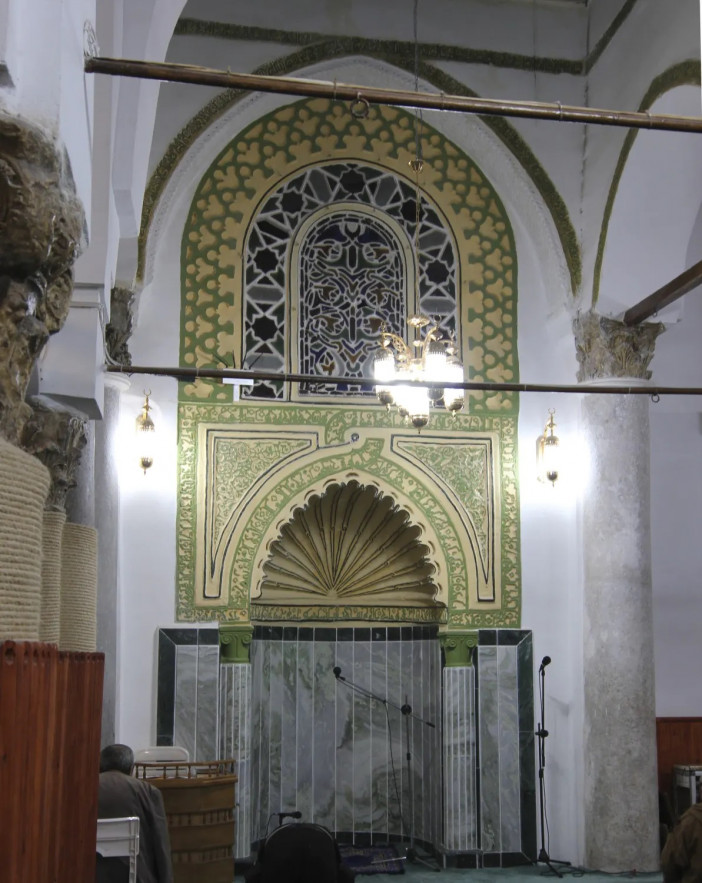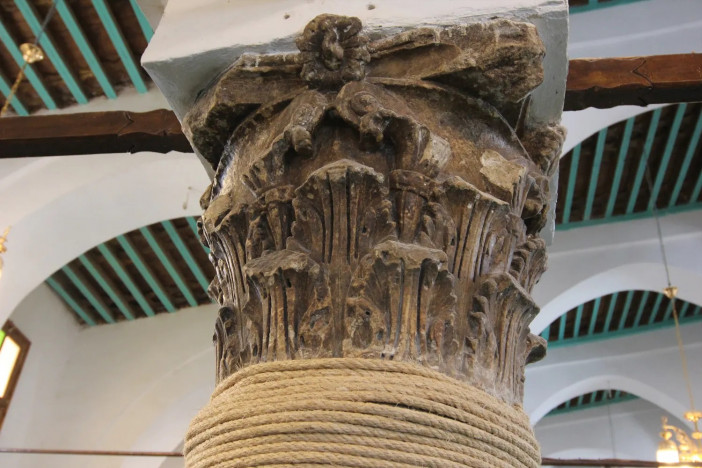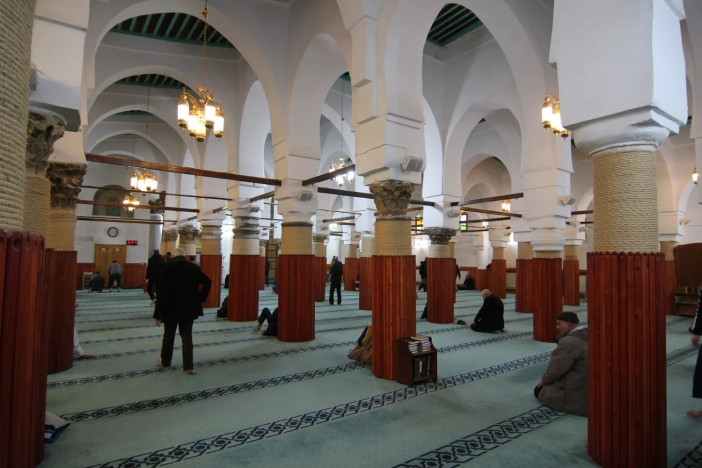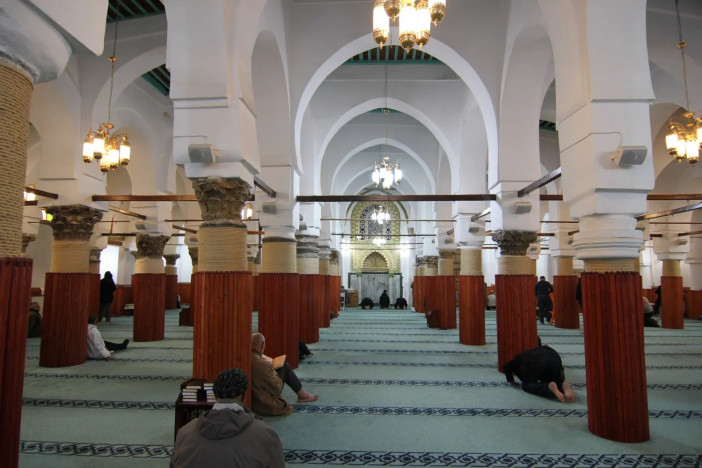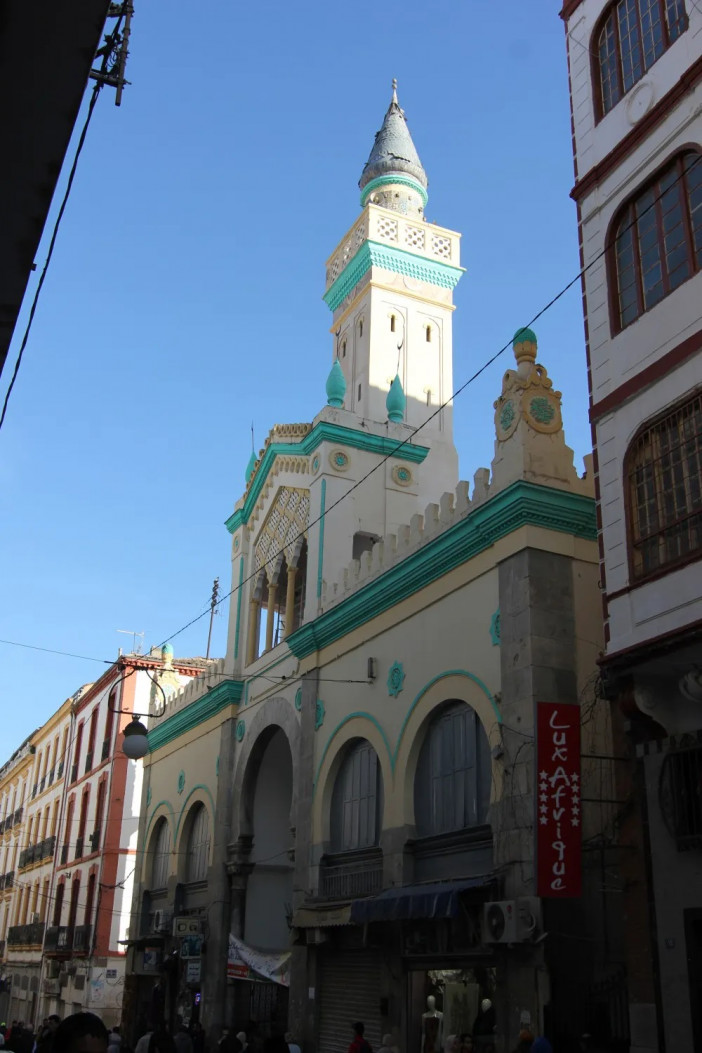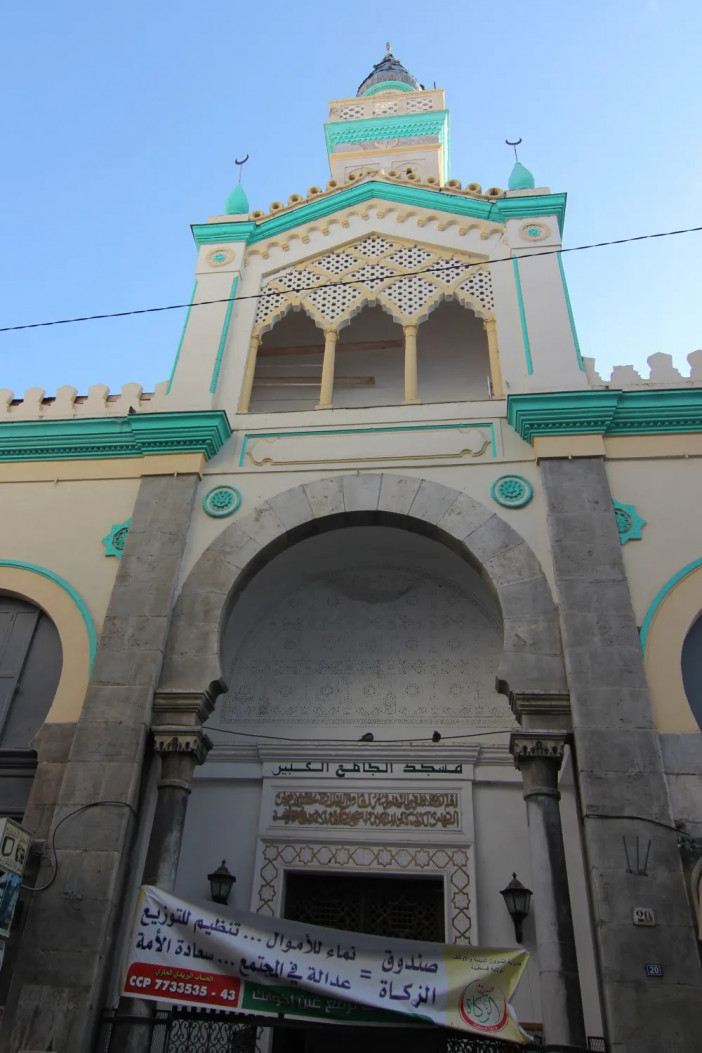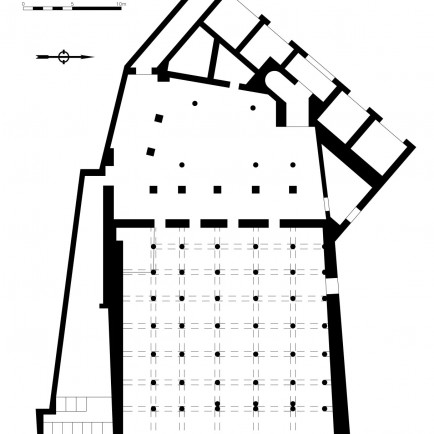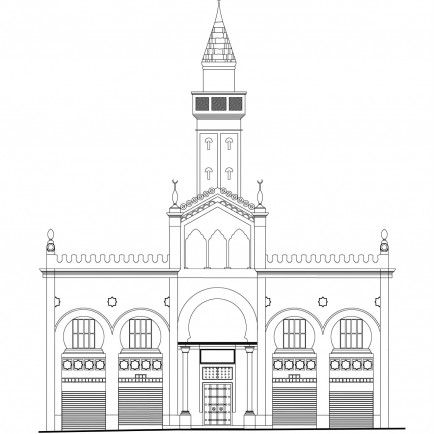The Great Mosque of Constantine
History
The Great Mosque of Constantine or the Djamâa El Kebir is a historical mosque located in the medina of Constantine and dating from the medieval period. It was built around the year 1135 (530 AH) by the Hammadids during the reign of the ruler Yahya ibn Abd al-Aziz, before being restored by the bey of Constantine in 1766. In 2014 the mosque closed for work and reopened in 2017
Urban and Architectural
A Roman temple's ruins served as the foundation for this mosque. In actuality, the prayer room's columns were salvaged from old shafts and capitals, the majority of which were built in the Corinthian style. Additionally, the columns that are close to the mihrab still stand as they did in the Roman temple. They stand taller than the others, setting them apart.
The mihrab niche on the qibla wall is fronted by a pointed arch with interlaced lobes and is crowned with a fluted half-dome. There are several similarities between the mihrab and Fatimid art. For instance, it mimics the shape of Jami 'Al-main Aqmar's entrance. The two mihrab capitals, however, continue to be entirely Hammadid. These are Algeria's oldest capitals with this style of lateral volutes.
Description
The prayer hall is off-axis with respect to the mihrab nave. This is because a nave on the north side was removed during urban restorations done during the French occupation in the middle of the 19th century. Although it's possible that the position of the minaret is original, both the facade and the minaret are from this time period. It has a square base with a tapered circular lantern. Due to the mosque's placement in the souks region, the facade is distinguished by a lower floor that is home to stores.
Due to renovation work, the mosque was off-limits to the public between 2014 and 2017.
References
https://fr.wikipedia.org/wiki/Grande_Mosqu%C3%A9e_de_Constantine
https://www.archnet.org/sites/16124
Details
Location
9J87+937 Grande Mosquée de Constantine, Rue Larbi Ben M'Hidi, Constantine, Algeria
Worshippers
1500
Owners
Yahya ibn Abd al-Aziz
Year of Build
Built : 1135-1136 , Restored: 1766.
Area
3000
Drawings
Map
History
The Great Mosque of Constantine or the Djamâa El Kebir is a historical mosque located in the medina of Constantine and dating from the medieval period. It was built around the year 1135 (530 AH) by the Hammadids during the reign of the ruler Yahya ibn Abd al-Aziz, before being restored by the bey of Constantine in 1766. In 2014 the mosque closed for work and reopened in 2017
Urban and Architectural
A Roman temple's ruins served as the foundation for this mosque. In actuality, the prayer room's columns were salvaged from old shafts and capitals, the majority of which were built in the Corinthian style. Additionally, the columns that are close to the mihrab still stand as they did in the Roman temple. They stand taller than the others, setting them apart.
The mihrab niche on the qibla wall is fronted by a pointed arch with interlaced lobes and is crowned with a fluted half-dome. There are several similarities between the mihrab and Fatimid art. For instance, it mimics the shape of Jami 'Al-main Aqmar's entrance. The two mihrab capitals, however, continue to be entirely Hammadid. These are Algeria's oldest capitals with this style of lateral volutes.
Description
The prayer hall is off-axis with respect to the mihrab nave. This is because a nave on the north side was removed during urban restorations done during the French occupation in the middle of the 19th century. Although it's possible that the position of the minaret is original, both the facade and the minaret are from this time period. It has a square base with a tapered circular lantern. Due to the mosque's placement in the souks region, the facade is distinguished by a lower floor that is home to stores.
Due to renovation work, the mosque was off-limits to the public between 2014 and 2017.


